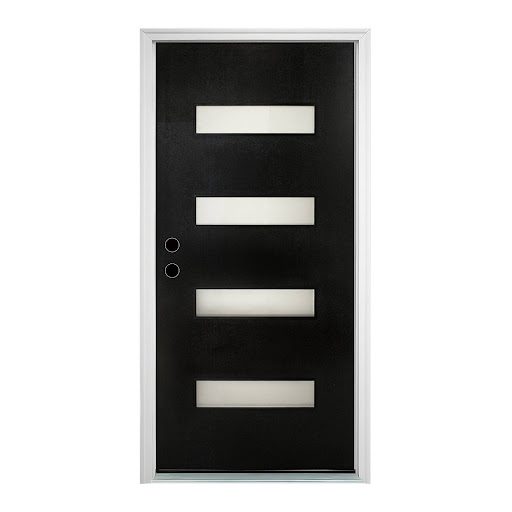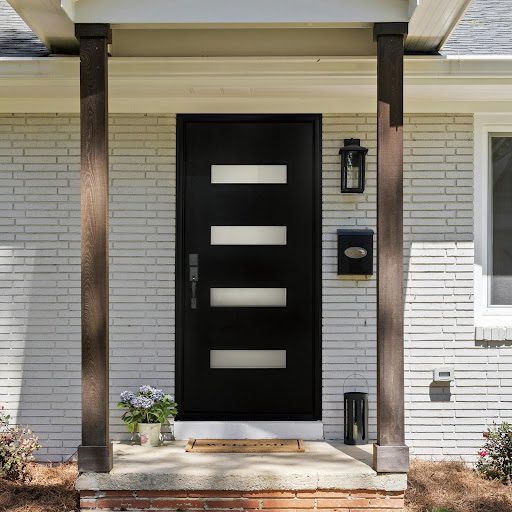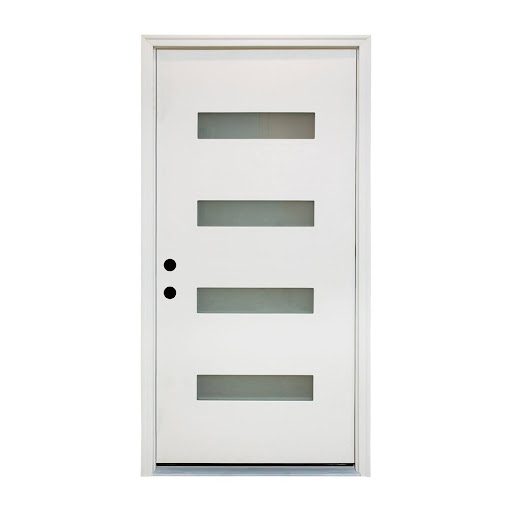Your home’s exterior door frame serves as the foundation for security, energy efficiency, and curb appeal. While many homeowners focus on selecting the perfect door, the frame often goes overlooked despite being equally critical to performance. A compromised or outdated frame can undermine even the highest-quality door, leading to drafts, moisture intrusion, security vulnerabilities, and increased energy costs.
Whether you’re upgrading for aesthetic reasons, addressing weather damage, or improving your home’s thermal envelope, choosing a premium exterior frame makes a measurable difference. The right frame protects your investment by ensuring proper door operation, preventing structural issues, and maintaining your home’s comfort year-round. Understanding what separates a basic frame from a premium option empowers you to make decisions that enhance both immediate functionality and long-term value. This guide walks you through everything you need to know about selecting, installing, and maintaining an exterior frame that delivers lasting performance.
Understanding the Importance of a Quality Exterior Frame
The exterior door frame functions as the structural anchor that determines how well your door performs across multiple dimensions. It bears the weight of the door itself while maintaining precise alignment that allows smooth operation over thousands of opening and closing cycles. When a frame lacks structural integrity or proper engineering, doors begin to sag, stick, or fail to latch securely—creating frustration and compromising home security.

Beyond mechanical function, the frame creates the critical seal between your conditioned interior space and outdoor elements. Premium frames incorporate thermal breaks, weatherstripping channels, and precision-milled surfaces that work together to eliminate air infiltration. This directly impacts your heating and cooling costs, with quality frames reducing energy loss by up to thirty percent compared to basic alternatives. The frame also serves as your first line of defense against water intrusion, which can lead to rot, mold growth, and costly structural repairs if moisture penetrates improperly sealed joints.
Security depends heavily on frame strength and anchoring methods. A reinforced frame with proper fastening resists kick-in attempts and forced entry far more effectively than standard construction. The visual impact shouldn’t be underestimated either—a well-crafted frame with clean lines and durable finish enhances your home’s exterior appearance while a warped or deteriorating frame detracts from overall curb appeal regardless of door quality.
Types of Exterior Frames
Material selection fundamentally determines how your exterior frame performs across varying climates and usage patterns. Wood frames offer traditional aesthetics with natural insulation properties that many homeowners prefer for period homes or custom applications. They provide excellent structural strength and can be milled to accommodate unique architectural details, though they require regular maintenance including painting or staining to prevent moisture damage and decay. Cedar and mahogany resist rot better than pine or fir, making them worthwhile upgrades in humid environments.

Steel frames deliver superior security and durability with minimal maintenance requirements. The material resists warping, won’t rot, and provides exceptional resistance to forced entry when properly installed. Modern steel frames incorporate thermal breaks—insulating barriers that prevent heat transfer through the metal—addressing the primary weakness of older steel construction. They work particularly well in commercial applications or homes where security takes priority, though surface rust can develop if the protective coating becomes compromised in coastal areas.
Fiberglass frames represent the premium category for residential applications, combining the best attributes of other materials without their drawbacks. These frames resist moisture completely, never rot or corrode, and maintain dimensional stability through extreme temperature fluctuations. The material’s natural insulation value exceeds wood while requiring virtually no maintenance beyond occasional cleaning. Fiberglass accepts paint finishes that can replicate wood grain textures, offering design flexibility alongside performance. Companies like Framewell have developed fiberglass door systems that demonstrate how advanced materials can deliver both aesthetic appeal and superior thermal performance. While initial costs run higher than alternatives, the elimination of maintenance expenses and extended lifespan often result in lower total ownership costs.
Vinyl-clad wood frames bridge the gap between traditional wood construction and low-maintenance exteriors. The wood interior provides structural integrity and familiar installation methods while the vinyl exterior eliminates painting requirements and resists moisture penetration. Aluminum-clad options offer similar benefits with greater durability in high-impact locations, though thermal performance requires attention to frame design that minimizes metal’s conductive properties.
Factors to Consider When Choosing an Exterior Frame
Climate conditions in your region should drive material selection more than any other factor. Coastal environments with salt exposure accelerate corrosion on steel frames and require either stainless steel construction or alternative materials like fiberglass that won’t degrade. Areas with high humidity and frequent rainfall demand frames that resist moisture absorption—eliminating untreated wood as a viable option unless you commit to rigorous maintenance schedules. Regions experiencing extreme temperature swings benefit from materials with low expansion coefficients, as frames that expand and contract significantly will eventually compromise weatherstripping and create gaps that leak air and water.
Architectural style influences both aesthetic compatibility and structural requirements. Historic homes often require wood frames to maintain period authenticity, though modern wood treatments can enhance durability without compromising appearance. Contemporary designs frequently incorporate steel or fiberglass frames with clean profiles that complement minimalist aesthetics. The door type you’re installing also matters—solid wood doors weighing over two hundred pounds need frames engineered for that load, while lightweight fiberglass doors allow more flexibility in frame construction.
Energy efficiency goals determine which frame features deserve priority. Check the frame’s U-factor rating, which measures heat transfer—lower numbers indicate better insulation. Quality frames achieve U-factors below 0.30 through multi-chamber construction, thermal breaks, and integrated weatherstripping systems. The frame’s compatibility with your door’s energy rating matters as well, since a high-performance door paired with a poorly insulated frame wastes the door’s potential. Consider frames with adjustable weatherstripping that maintains effective seals even as components settle over time.
Security requirements vary based on location and personal concerns. Frames designed for security feature reinforced strike plates with screws extending at least three inches into structural framing, not just decorative trim. Steel reinforcement around lock areas prevents spreading during forced entry attempts. Hinge-side security also matters—look for frames with non-removable hinge pins or continuous hinges that eliminate this vulnerability point. Budget constraints naturally influence decisions, but evaluating total cost of ownership rather than just initial price reveals that premium frames often cost less over their lifespan when you factor in maintenance, energy savings, and replacement intervals. A fiberglass frame costing twice as much as wood but lasting three times longer while eliminating maintenance represents better value despite higher upfront investment.
Installation Tips for Exterior Frames
Proper installation begins with accurate rough opening preparation. Measure the opening at multiple points to verify it’s square and plumb—discrepancies exceeding one-quarter inch require correction before proceeding. Remove old framing completely, inspecting the surrounding structure for rot or damage that needs repair. Apply a self-adhering waterproof membrane to the rough opening, wrapping it around corners and extending at least four inches beyond the frame perimeter to create a continuous moisture barrier.
Position the frame in the opening and insert shims at hinge locations and strike plate areas first, as these points bear the greatest stress. Check plumb with a level on both sides, adjusting shims until the frame sits perfectly vertical. Verify the frame is square by measuring diagonals—equal measurements confirm proper geometry. Secure the frame using screws long enough to penetrate structural studs by at least two inches, placing fasteners through shim locations to avoid bowing the frame. Never over-tighten fasteners, as this can warp the frame and prevent proper door operation.
Install the door in the frame and test operation before completing weatherproofing. The door should swing smoothly without binding and latch securely without forcing. Adjust shims if needed to achieve consistent gaps around the door perimeter. Apply low-expansion foam insulation in cavities between the frame and rough opening, filling gaps without creating pressure that distorts the frame. Trim excess foam after curing, then install exterior trim and caulk all seams with paintable exterior-grade sealant. Inside, add trim and insulation to complete the thermal envelope and conceal the installation.
Maintenance and Repair of Exterior Frames
Regular maintenance preserves frame performance and prevents minor issues from escalating into costly repairs. Inspect weatherstripping twice yearly, checking for compression, tears, or gaps that allow air infiltration. Replace damaged sections immediately to maintain energy efficiency. Clean frames quarterly using mild soap and water, removing dirt and debris that can trap moisture against surfaces. Pay special attention to drainage weep holes at the bottom of the frame, ensuring they remain clear to allow water escape.
Wood frames require periodic refinishing to protect against moisture and UV damage. Sand and repaint or restain every three to five years depending on exposure, addressing any areas where finish has failed before wood deterioration begins. Check for soft spots indicating rot, particularly at the sill where water accumulates. Steel frames need inspection for finish damage or rust spots—sand affected areas, apply rust inhibitor, and touch up with matching paint to prevent corrosion spread.
Address operational issues promptly when doors begin sticking or failing to latch properly. These symptoms often indicate frame movement or settling that requires shim adjustment. Tighten loose hinge screws and strike plates, replacing short screws with longer versions that reach structural framing. For frames showing significant deterioration, warping, or structural compromise, replacement becomes more cost-effective than extensive repairs that may only provide temporary solutions.
Making the Right Investment in Your Home’s Entry System
Selecting a premium exterior frame represents one of the most impactful investments you can make in your home’s performance and longevity. The frame determines how effectively your door system protects against weather intrusion, maintains energy efficiency, and provides security for your family. While basic frames may appear adequate initially, they often fail to deliver the durability and performance that quality materials and proper engineering provide over decades of use.
Understanding the distinctions between wood, steel, fiberglass, and composite options allows you to match material properties to your specific climate challenges and aesthetic preferences. Considering factors like regional weather patterns, architectural compatibility, energy goals, and security needs ensures your selection addresses your home’s unique requirements rather than settling for generic solutions. Proper installation following manufacturer specifications and building best practices maximizes frame performance, while consistent maintenance preserves that performance year after year. Whether you’re replacing a deteriorating frame or upgrading during renovation, choosing premium quality delivers measurable benefits in comfort, cost savings, and peace of mind that justify the investment many times over.
Read More about replace exterior door frame





























